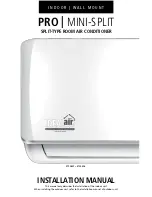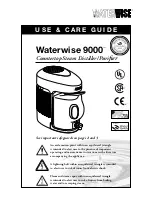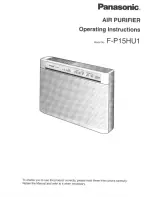
IM 368 / Page 7 of 20 (Rev. 11/03)
The standard cabinet/wall sleeve will accommodate a maximum
wall thickness described in Table 1. For thicker walls, cabinet/wall
sleeve extensions are available from your local representative.
When it is supplied by the representative, it is treated for
maximum corrosion resistance and matched to the exact size of
the standard wall sleeve. Field fabricated wall sleeve extensions
should also be treated and matched to the standard wall sleeve.
Be sure to provide air splitters to prevent recirculation of
condenser air. Air splitters should be placed in the wall sleeve as
shown in Figure A. It is important that spacing of the air splitters
match exactly those dimensions shown in Figure A.
Installation
Wall sleeve extensions are shipped in a separate carton and
tagged to match the proper unit. Be sure to check tagging of the
extension against that of the unit. Install the wall sleeve
extension as follows:
1. Position the extension with standard cabinet/wall sleeve so
proper alignment with drain and mounting holes is achieved.
2. Place a bead of caulk around the perimeter of the wall sleeve
and another bead around the mating side of the wall sleeve
extension so that the joint is watertight. Be sure to use a
resilient caulking such as silicone.
3. Assemble the wall sleeve extension to the wall sleeve. Clean
out weep holes to assure proper drainage.
4. Attach indoor drain kit (if used) according to the instructions
on page 9. Outdoor drain kits must be installed after wall sleeve
is in place.
5. Continue wall sleeve installation according to instruction #4
on page 6.
Louver Frame
Louver frames should be used for panel wall and thin wall
applications to assure positive anchoring to the wall. Recess the
cabinet/wall sleeve so that the louver is flush with the outside of
the building. Place louver frame around cabinet/wall sleeve as
shown in Figure B. Be careful not to drill holes in the bottom of
the wall sleeve. Secure angles at sides and top of walls.
Anchoring
Anchoring the cabinet/wall sleeve in the opening is accomplished
as shown in Figure C. Be sure not to drill holes in the bottom as it
will cause leaks. It is recommended that rubber isolation washers
be used with the fasteners to minimize sound transmission from
the equipment to the wall, at the point of contact.
Wall Sleeve Extensions
Figure A. Wall Sleeve Extension
Figure B. Louver Frame
Figure C. Anchoring Methods






































